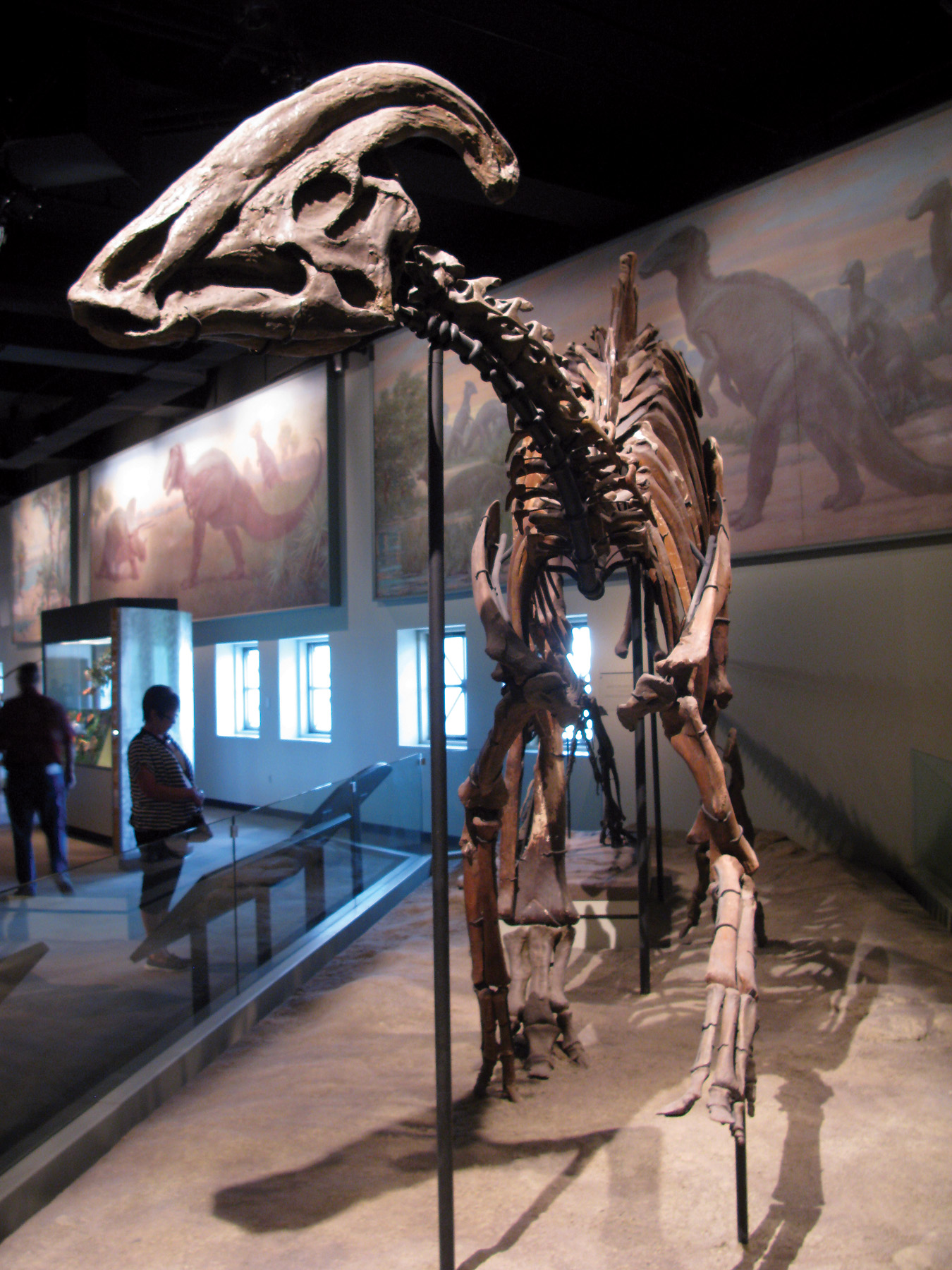Parasaurolophus << `pair` uh `sawr` uh LAHF uhs >> was a dinosaur known for the tube-shaped crest on the back of its head. Parasaurolophus belonged to a group of dinosaurs called hadrosaurs. Hadrosaurs are sometimes nicknamed duckbilled dinosaurs. Parasaurolophus lived between 77 million and 71 million years ago. It was part of a group of hadrosaurs called lambeosaurs that are known for their flashy, hollow head crests. Like other hadrosaurs, Parasaurolophus had a toothless beak and jaws with hundreds of tightly packed teeth. These teeth were used for grinding plant food.

Parasaurolophus was a relatively large hadrosaur that normally walked on all four legs. However, it could rear up on its hind legs to feed or to run. Some individuals measured up to 33 feet (10 meters) in length. Parasaurolophus may have weighed approximately 4 tons (3.6 metric tons). Skin impressions from a Parasaurolophus fossil show that it had small, irregularly shaped scales that did not overlap.
The crest of Parasauralophus could reach over 3 feet (1 meter) long. It was hollow and enclosed a long and complex nasal cavity. When the animal breathed in through its nose, the air would have travelled up the front of the crest, then looped above and behind the eyes before travelling down the back of the crest and into the throat on its way to the lungs. Scientists believe that the crest of Parasaurolophus had two main functions. First, the crest is thought to have been used as a visual display to signal to other animals. Also, the complex nasal cavity could likely produce calls for communication with other Parasaurolophus. The dinosaur may have used these calls to locate or attract mates or to warn others of predators.
Parasaurolophus fossils have been found in Alberta, Canada, and in Utah and New Mexico in the United States. The dinosaurs lived in lush coastal plains beside a shallow inland sea that existed at the time in what is now North America. Parasaurolophus lived alongside other plant-eating dinosaurs and was preyed upon by relatives of Tyrannosaurus.
